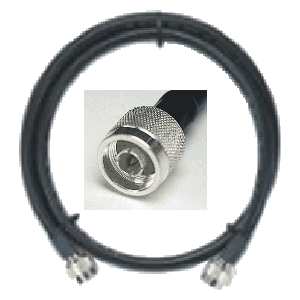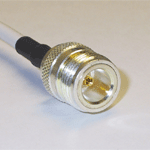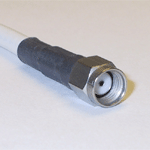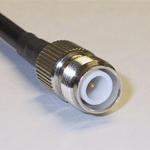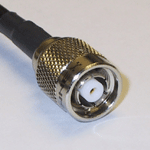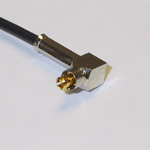The following article is excerpted from various sources and simplified to make it more easy to understand for new players or those interested in the Wireless Radio.
In terms of mathematics, units used a lot is a logarithmic unit. Logarithmic unit is very easy calculation. Well, his way of calculation you can see in the illustrations or brief examples below.
dB (Decibel)
Is a unit of difference (or ratio) between the strength of the signal transmit power. Penamaannya also to the memory of Alexander Graham Bell (hence the letter "B" is uppercase). The unit is used to show the effects of a device to the power or the transmit power of a signal.
For example:
A cable has a loss (attenuation or damping) 6dB (yes its a big loss: <) or an amplifier has a gain (reinforcement) 15 dB. Use of this unit is very useful because Strengthening (Gain) or weakening (Loss) can be calculated simply by the addition or subtraction.
dBm (dB milliWatt)
Is a unit of signal strength or transmit power (or strengths Signal Power Level). 0 dbm is defined as 1 mW (milliWatt) loads the transmit power, for example, could be from an antenna or radio. Small emittance is a negative number (eg -90 dBm).
For example: Typically the radio with WLAN 802.11b standard has a strength of 15 dbm transmit power (32 mW). This radio also has other specifications such as the RX sensitivity of -90 dbm (which is the minimum transmit power to obtain throughput of 54 Mbps)
Calculation formula from mW to dBm is as follows:
mW = 10dBm/10
milliwatt (mW) is one per thousand watt (W), or 1000 milliWatts = 1 watt. Standard International Units are watts of power (power). 1 watt = 1 joule of energy per second.
MW = 10 dBm 10:00
MW = 35 dBm 15:44
MW = 65 dBm 18:13
20:00 dBm = 100 mW
150 mW = 21.76 dBm
23:01 dBm = 200 mW
300 mW = 24.77 dBm
350 mW = 25.44 dBm
400 mW = 26.2 dBm
500 mW = 26.99 dBm
600 mW = 27.78 dBm
dBi (dB isotropic)
Strengthening of an antenna to a standard antenna imaginari (isotropic antenna). Because it is a imaginari, hence the standard antenna is only there in theory and used for measurement. Strengthening (Gain) from the antennas (above 1 GHz) dBi typically use unit. A 24 dBi Grid Antenna has a strengthening of (gain) equal to 24 dBi of antenna standards imaginari 0 dBi (isotropic antenna)
Before you buy antennas from the vendor, ask first how much amplified in units of dBi. This unit is a unit of international standards. 24 dBi Grid Antenna means though different brands have the same reinforcement is 24 dBi. Brand has no effect when the second antenna has a reinforcement (Gain) and with the same radiation pattern (radiation pattern) the same.
About Pattern Radiation (Radiation Pattern) we will discuss in another article. Radiation Pattern of an Antenna also helps transmit power or the range and can also help reduce interference in the practice in the field. (Tokowifi.com)
READ MORE - The term general term Radio Wireless (dB, dBm, dBi, ...)
In terms of mathematics, units used a lot is a logarithmic unit. Logarithmic unit is very easy calculation. Well, his way of calculation you can see in the illustrations or brief examples below.
dB (Decibel)
Is a unit of difference (or ratio) between the strength of the signal transmit power. Penamaannya also to the memory of Alexander Graham Bell (hence the letter "B" is uppercase). The unit is used to show the effects of a device to the power or the transmit power of a signal.
For example:
A cable has a loss (attenuation or damping) 6dB (yes its a big loss: <) or an amplifier has a gain (reinforcement) 15 dB. Use of this unit is very useful because Strengthening (Gain) or weakening (Loss) can be calculated simply by the addition or subtraction.
dBm (dB milliWatt)
Is a unit of signal strength or transmit power (or strengths Signal Power Level). 0 dbm is defined as 1 mW (milliWatt) loads the transmit power, for example, could be from an antenna or radio. Small emittance is a negative number (eg -90 dBm).
For example: Typically the radio with WLAN 802.11b standard has a strength of 15 dbm transmit power (32 mW). This radio also has other specifications such as the RX sensitivity of -90 dbm (which is the minimum transmit power to obtain throughput of 54 Mbps)
Calculation formula from mW to dBm is as follows:
mW = 10dBm/10
milliwatt (mW) is one per thousand watt (W), or 1000 milliWatts = 1 watt. Standard International Units are watts of power (power). 1 watt = 1 joule of energy per second.
MW = 10 dBm 10:00
MW = 35 dBm 15:44
MW = 65 dBm 18:13
20:00 dBm = 100 mW
150 mW = 21.76 dBm
23:01 dBm = 200 mW
300 mW = 24.77 dBm
350 mW = 25.44 dBm
400 mW = 26.2 dBm
500 mW = 26.99 dBm
600 mW = 27.78 dBm
dBi (dB isotropic)
Strengthening of an antenna to a standard antenna imaginari (isotropic antenna). Because it is a imaginari, hence the standard antenna is only there in theory and used for measurement. Strengthening (Gain) from the antennas (above 1 GHz) dBi typically use unit. A 24 dBi Grid Antenna has a strengthening of (gain) equal to 24 dBi of antenna standards imaginari 0 dBi (isotropic antenna)
Before you buy antennas from the vendor, ask first how much amplified in units of dBi. This unit is a unit of international standards. 24 dBi Grid Antenna means though different brands have the same reinforcement is 24 dBi. Brand has no effect when the second antenna has a reinforcement (Gain) and with the same radiation pattern (radiation pattern) the same.
About Pattern Radiation (Radiation Pattern) we will discuss in another article. Radiation Pattern of an Antenna also helps transmit power or the range and can also help reduce interference in the practice in the field. (Tokowifi.com)

